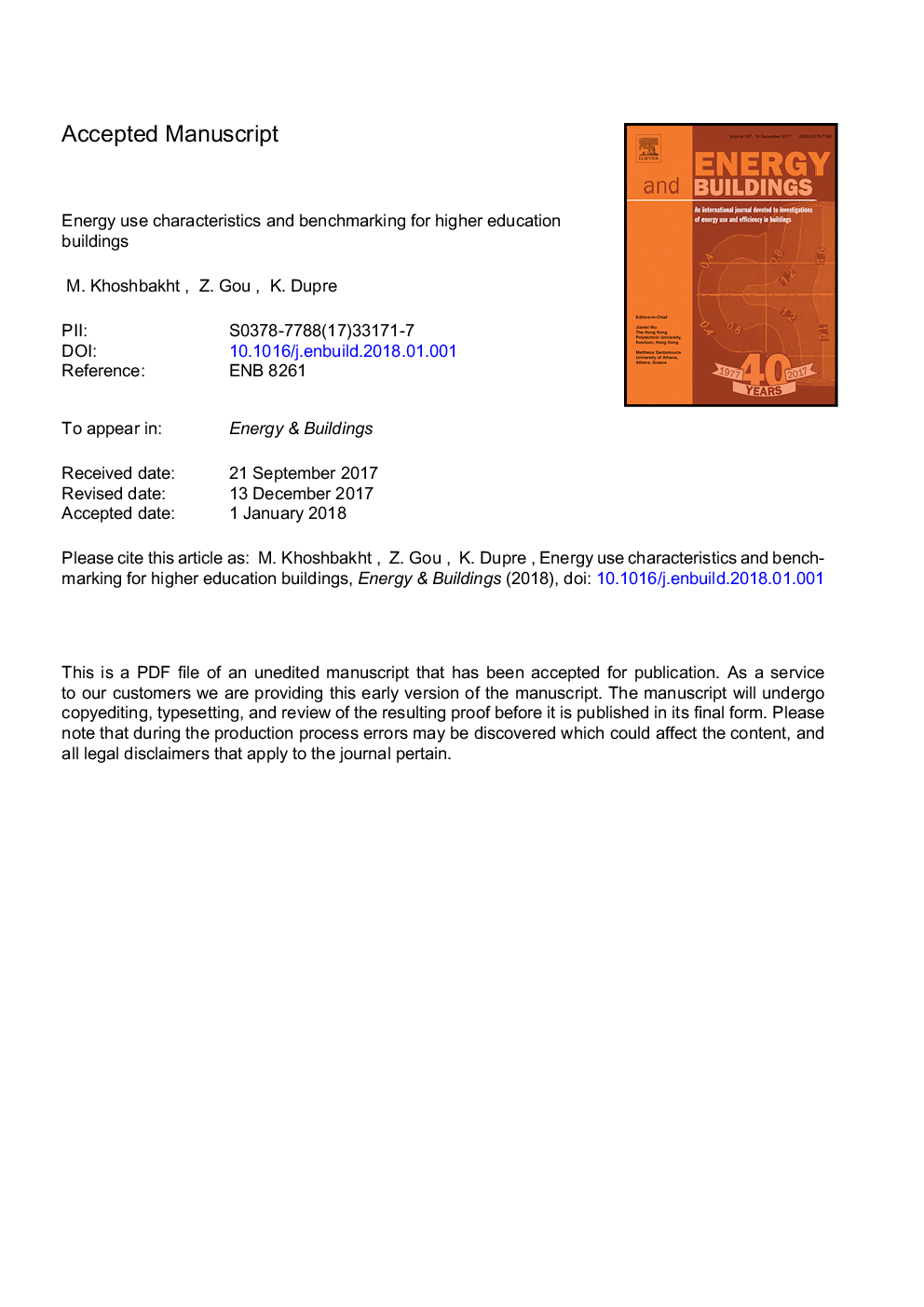| Article ID | Journal | Published Year | Pages | File Type |
|---|---|---|---|---|
| 6728823 | Energy and Buildings | 2018 | 28 Pages |
Abstract
Higher education buildings serve complex functions by providing spaces for various activities and disciplines. This study aims to understand energy use characteristics of different types of buildings in higher education campuses and to establish an energy benchmark system. The data was collected form 80 university campus buildings in Australia. Energy consumption (EC) and energy use intensity (EUI) as well as related space types and occupancy conditions were analysed. Based on a comparative study of several statistical methods, the stochastic frontier analysis (SFA) method was selected as the most appropriate benchmarking technique for this research. The benchmark values for various activities and disciplines were determined using the SFA statistical technique. Regarding activities, buildings which were used mostly for research had the highest benchmark EUI value at 216â¯kWh/m2/year and buildings for academic offices had the lowest benchmark value at 137â¯kWh/m2/year. When considering disciplines, buildings for Science had the highest benchmark EUI value at 164â¯kWh/m2/year and buildings for Health had the lowest benchmark value at 136â¯kWh/m2/year. The energy benchmarks developed for each building type can guide university authorities to promote energy efficiency by evaluating energy use, determining feasible energy saving techniques, and forecasting future planning development.
Related Topics
Physical Sciences and Engineering
Energy
Renewable Energy, Sustainability and the Environment
Authors
Maryam Khoshbakht, Zhonghua Gou, Karine Dupre,
